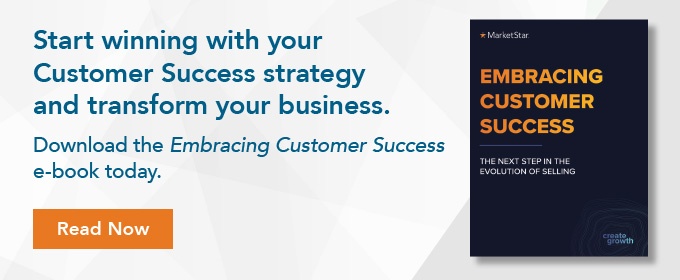
Ensuring customer success is at the heart of consultative selling isn’t just fluff. When you are selling technology, selling the product alone isn’t enough. You must sell a solution for a problem that your technology can solve. That means much deeper customer engagement that delivers an immediate return and more ROI over time. That’s why leading companies invest in customer success.
Customer retention is a primary objective for every company. Customer churn is expensive because finding new customers costs substantially more than retaining existing customers. It also has been shown that a 5 percent increase in customer retention can increase revenue by as much as 95 percent, so investing in customer success pays off.
The most successful companies must deliver ongoing value throughout any customer relationship, demonstrating consistent ROI beyond the initial sale. Customer success management is the best strategy to actively support customer relationships over time. Customer success is designed to make customers more successful with the products they purchase and realize the full economic value from their product investment.
The greater the customer success, the greater the customer loyalty and the less likelihood of churn. A customer success program also increases the potential to sell more products and services. However, managing customer experience requires a dedicated effort with established best practices. It requires proactive management of the customer engagement including coordination across strategy, processes, data, and resource management.
Here are three essential steps that you should include as part of your customer success best practices:
Step 1: Define your customer engagement strategy.
Not all customers are created equal. Some customers will have more value to your company than others but that doesn’t mean they should be treated as second-class citizens. Maintaining a positive customer experience is essential to promote customer success and reduce churn, so every customer needs to feel special.
To create a sense of engagement that demonstrates to the customer that they are important, you must have an engagement strategy. How frequently will you be in contact? What means of communication will you use? How do you plan to monitor customer success and keep them engaged?
Start by defining customer tiers. Strategic accounts that have a higher lifetime value are Tier 1 customers. These are high-touch accounts that require frequent, personalized interactions and should fall at the top of your engagement pyramid. Value accounts come next. These accounts may be of less strategic importance but have significant value as a group. Plan to use more digital touchpoints for value customers since they are more efficient and still provide the right one-to-one interaction.
In defining your engagement strategy, balance the amount of effort and interaction against results and value. The goal is to optimize interaction for every customer while optimizing engagement value at each tier.
Step 2: Use the right engagement processes for each customer.
Once you have defined your customer tiers you can develop a set of engagement processes to match each tier. These processes should be consistent and effective and should be flexible enough to evolve with customer engagement.
Include relationship-building activities such as quarterly and annual reviews and regular check-ins by phone and email. For key accounts, schedule regular health checks and even one-on-one consulting. For smaller accounts, you can create engagement by sharing webinars and white papers.
Be sure to include procedures to identify and manage at-risk customers as part of your processes. Customers can be considered at risk for any number of reasons: market instability, onboarding issues, technical issues, staffing changes, and so on. Look for changes in product usage patterns or communications to identify at-risk customers and segment them so you can apply a more targeted approach to identify the source of any problems and provide resolutions.
Step 3: Use data to drive the right conversations.
Like most business processes, customer success should be data-driven. By tracking the right information, you can learn a lot about a customer and gather data points to guide customer engagement. For example, the customer relationship management (CRM) system, online tracking tools, website analytics, customer surveys, and other tools all inform the customer story. However, those data points are only useful if they are applied in context so you can create a comprehensive understanding of the customer experience.
Successful selling is powered by data, and customer success depends on collecting, storing, and organizing the right data. The right data collection strategies enable the sales teams to manage personalized customer interaction based on insight, rather than generic assumptions. To make sense of the data, you need to have a strategic data plan in place. For example, the four types of data points that every customer success team should have are:
- Contact: email, name, company, phone number
- Demographic: location, age, industry
- Transactional: purchase history, interactions, communications
- Relationship: likes, dislikes, habits
Once you gain a comprehensive view of the customer, you can deliver the best possible results.
Behind every successful sales team is a customer success team responsible for building and strengthening customer relationships. The better the customer’s interaction is with the CS team, the lower the customer churn rate and the higher the potential revenue. Happy customers are an asset to any organization, not only because of the revenue they generate but because of the goodwill they spread. Happy customers are your best evangelists.
Having a dedicated customer success team gives you a competitive edge. If you don’t have the resources to create your own customer success team, consider getting help with onboarding new clients, managing the customer experience, and identifying areas where you can increase customer spend. Outsourcing customer success can be a winning strategy for any organization. To learn more, read our e-book, Embracing Customer Success.








